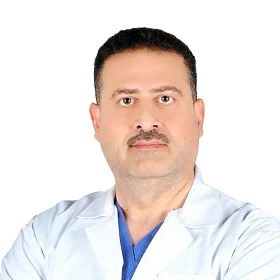Radiology
Radiology, a branch of medicine that focuses on the use of imaging technology to diagnose and treat diseases, has come a long way since its inception. Over the years, advancements in technology have revolutionized the field, making it an indispensable part of modern healthcare. In this article, we will explore the current state of radiology, its key technologies, and the promising developments that are shaping its future.
Current Technologies in Radiology
-
X-ray Imaging: X-rays remain the most common and widely used imaging technique in radiology. They provide a quick and non-invasive way to visualize bones and detect fractures, pneumonia, and other abnormalities.
-
Computed Tomography (CT): CT scans use X-rays and computer processing to create detailed cross-sectional images of the body. They are particularly useful for examining internal injuries, detecting tumors, and guiding surgical procedures.
-
Magnetic Resonance Imaging (MRI): MRI uses powerful magnetic fields and radio waves to produce detailed images of the body's internal structures. It is particularly effective for imaging soft tissues, such as the brain, spinal cord, and muscles.
-
Ultrasound: This non-invasive imaging technique uses high-frequency sound waves to visualize internal organs and structures. It is commonly used for prenatal care, detecting abnormalities in the heart, and guiding needle biopsies.
-
Positron Emission Tomography (PET): PET scans use radioactive tracers to visualize metabolic processes in the body. They are particularly useful for detecting cancer, assessing brain function, and monitoring the progression of neurological disorders.
Emerging Trends and Future Developments
-
Artificial Intelligence (AI): AI has the potential to revolutionize radiology by improving the accuracy and efficiency of image interpretation. Machine learning algorithms can help radiologists identify patterns and anomalies in imaging data, leading to earlier and more accurate diagnoses.
-
3D Printing: The integration of 3D printing technology with radiology has opened up new possibilities for personalized medicine. By converting imaging data into 3D models, physicians can create patient-specific implants, surgical guides, and anatomical models for preoperative planning.
-
Molecular Imaging: Advances in molecular imaging techniques, such as PET-CT and MRI-PET, are enabling radiologists to visualize biological processes at the molecular level. This can lead to earlier detection of diseases and more targeted treatment approaches.
-
Tele-radiology: The rise of telemedicine has paved the way for tele-radiology, allowing radiologists to remotely interpret imaging studies and collaborate with colleagues around the world. This can improve access to specialized expertise and reduce healthcare disparities.
The field of radiology continues to evolve, driven by technological advancements and the pursuit of better patient outcomes. As new technologies and techniques emerge, radiologists will play an increasingly vital role in the diagnosis and management of a wide range of diseases. The future of radiology holds immense promise, and it is poised to transform the way we approach healthcare in the years to come.
Our doctors
Not found
Reviews













